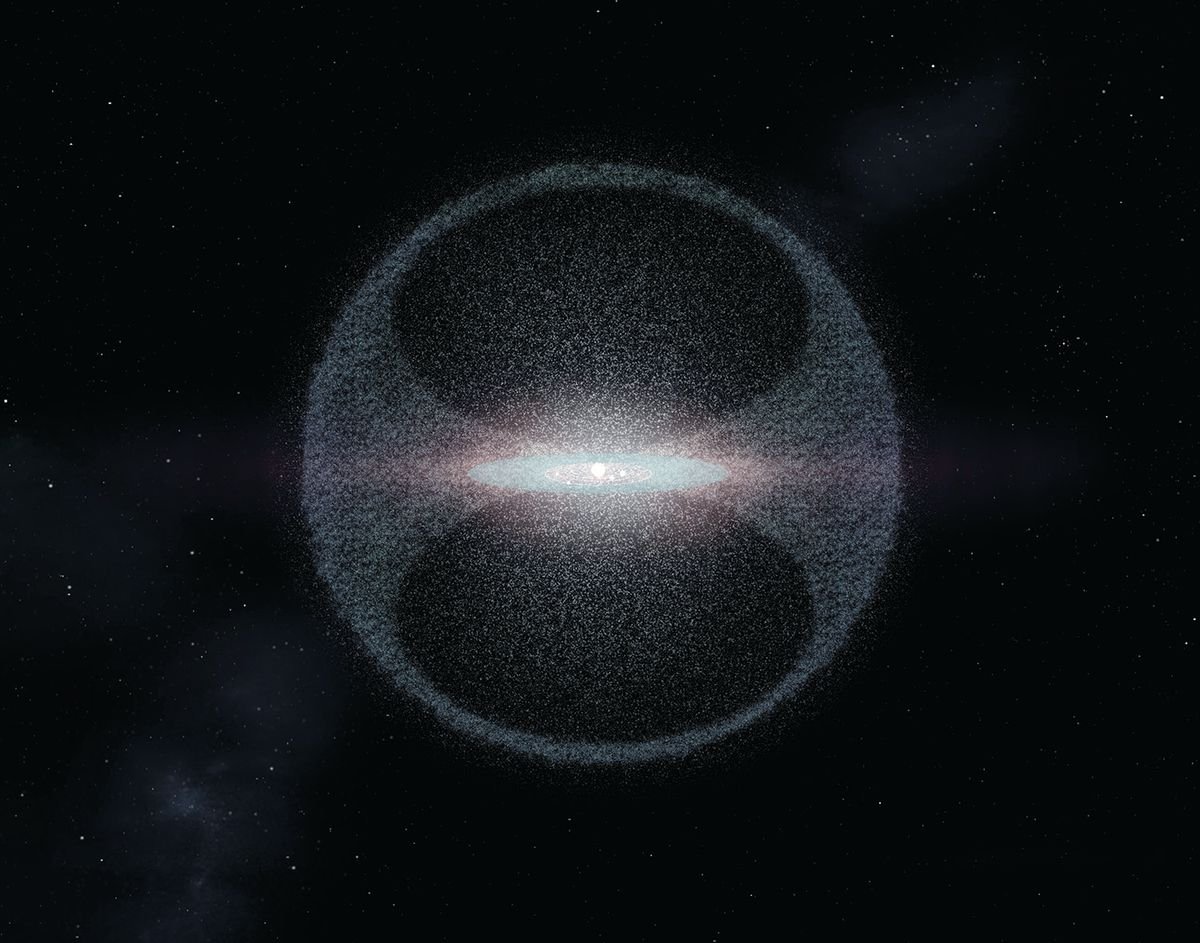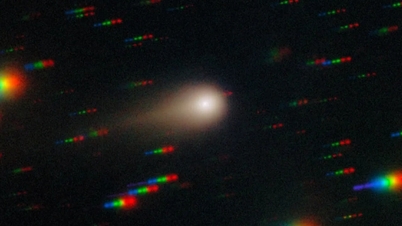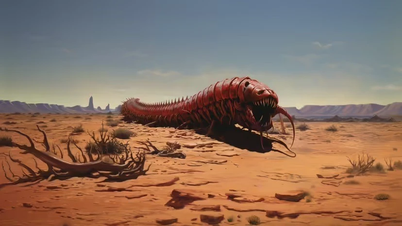(NLDO) - The mysterious space region that NASA's Voyager spacecraft are heading to may contain strange copies of the "arms" of the Milky Way.
A group of scientists from many research facilities in the US used NASA's Pleiades supercomputer to analyze the rare data that humanity has about the mysterious structure called "Oort Cloud" and discovered something shocking.

The Oort cloud is a two-layer spherical structure surrounding the Solar System - Graphic image: NASA
The Oort Cloud lurks at the edge of our star system and is about 99,000 times wider than the distance between Earth and the Sun.
Until now, scientists still do not know anything about its true shape. They only roughly guess that it is a spherical shell surrounding the entire star system, possibly consisting of two layers.
The detailed structure and distribution of icy objects within the Oort Cloud remain a mystery.
Now, contrary to all imagination, NASA's Pleiades shows the presence of a spiral structure that resembles a copy of the spiral "arms" that the galaxy that contains Earth, the Milky Way, possesses.
Although it is called the Milky Way, it is actually a spiral galaxy with four giant "arms" that create a brilliant disk of light. The "Milky Way" that snakes across the sky is actually part of that disk of light.
"We found that some of the comets in the inner Oort Cloud, located between 1,000 and 10,000 AU, form a long-lived spiral structure," Southwest Research Institute Science Director Luke Dones, a member of the research team, told Space.com.
AU is an astronomical unit, 1 AU is the distance from Earth to the Sun.
"We were quite surprised. Spirals are seen in Saturn's rings, disks around young stars and galaxies. The universe seems to like spirals!" - Dr. Dones continued.
Although tiny compared to the spirals that make up the Milky Way, the Oort Cloud's icy spirals are as long as 15,000 AU, running perpendicular to the galactic plane.
There are billions of comets that make up this strange spiral. And that's just a fraction of the comets in the Oort Cloud.
To reach the above conclusion, the researchers had to synthesize a huge dataset of objects from the Oort Cloud and other relevant details collected by spacecraft and observatories.
The team is also looking for solutions to be able to observe and photograph the above spiral structure.
The most likely option is to use the Spacetime Legacy Survey (LSST), a planned 10-year program for the Vera Rubin Observatory (located in Chile), scheduled to start later this year.
Source: https://nld.com.vn/nasa-phat-hien-dai-ngan-ha-thu-2-o-ria-he-mat-troi-196250301080625843.htm


![[Photo] Flooding on the right side of the gate, entrance to Hue Citadel](https://vphoto.vietnam.vn/thumb/1200x675/vietnam/resource/IMAGE/2025/10/28/1761660788143_ndo_br_gen-h-z7165069467254-74c71c36d0cb396744b678cec80552f0-2-jpg.webp)


![[Photo] Draft documents of the 14th Party Congress reach people at the Commune Cultural Post Offices](https://vphoto.vietnam.vn/thumb/1200x675/vietnam/resource/IMAGE/2025/10/28/1761642182616_du-thao-tai-tinh-hung-yen-4070-5235-jpg.webp)
![[Photo] National Assembly Chairman Tran Thanh Man received a delegation of the Social Democratic Party of Germany](https://vphoto.vietnam.vn/thumb/1200x675/vietnam/resource/IMAGE/2025/10/28/1761652150406_ndo_br_cover-3345-jpg.webp)



























![[Photo] President Luong Cuong attends the 80th Anniversary of the Traditional Day of the Armed Forces of Military Region 3](https://vphoto.vietnam.vn/thumb/1200x675/vietnam/resource/IMAGE/2025/10/28/1761635584312_ndo_br_1-jpg.webp)











































































Comment (0)